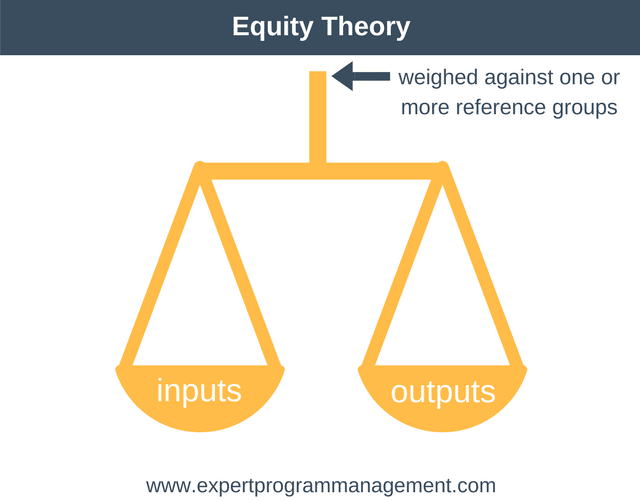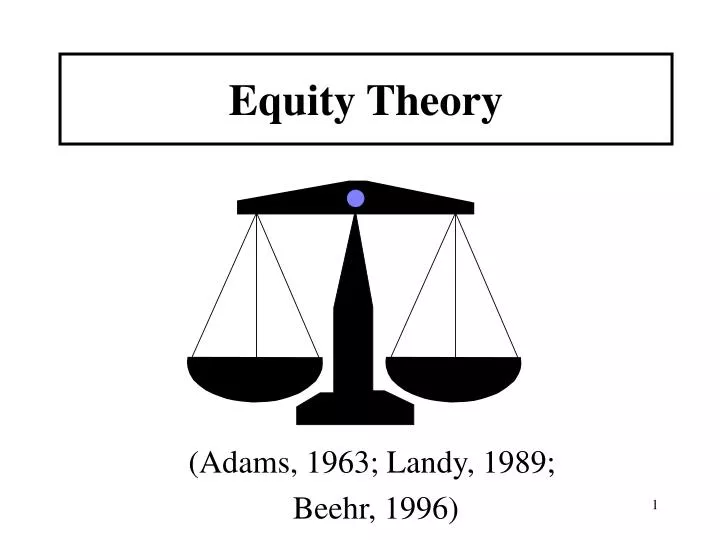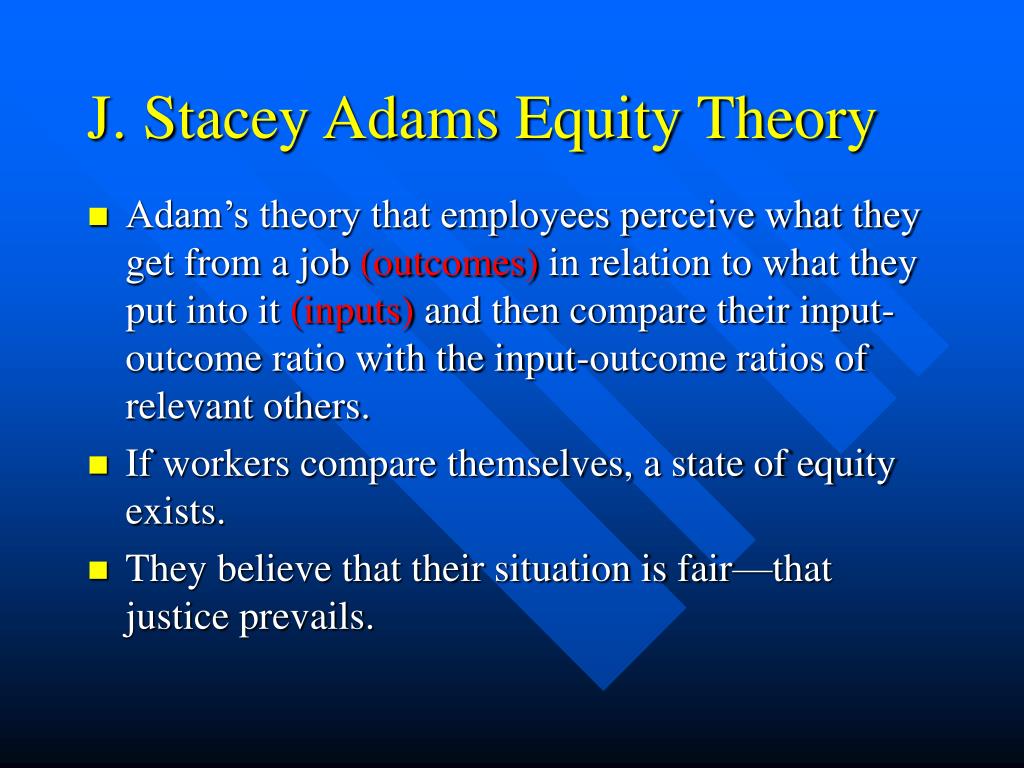
John Stacy Adams and Equity Theory Process of Model of Motivation
The equity theory of motivation, formulated by Stacey Adams, emphasizes the importance of fairness in motivating individuals. Understanding this theory is crucial for leaders and managers seeking to create an environment that fosters employee motivation and engagement. The Basics of Equity Theory of Motivation
What Is Equity Theory? Ground Report
This theory was developed by J. Stacey Adams in 1963 and has since been used to explain employee behavior and motivation. Adams' Equity Theory suggests that employees compare their own inputs and outputs (e.g., effort and rewards) to those of others, and when there is a perceived imbalance, they will act to restore equity.

John stacey adams equity theory book picpassa
Equity theory was developed in 1963 by John Stacy Adams, an American workplace and behavioral psychologist. 1 At the time of its conception, inequity was a prevalent concern in the fields of labor and government, but it was not fully understood.

معرفی نظریه برابری آدامز (Adams Equity Theory) و تاثیر آن بر انگیزش کارمندان کار و کسب
65.8K What is Equity Theory of Job Motivation? John Stacey Adams, a workplace and behavioural psychologist, put forward his Equity Theory on job motivation in 1963.

Thuyết công bằng (Equity theory) của John Stacey Adams
Overview equity theory Quick Reference A cognitive theory of motivation, based on the work of J. Stacey Adams, which claims that employees will be motivated if they believe that they are fairly treated in the workplace.
Equity Theory
The equity theory of motivation is one way to think about motivation, and it can be a helpful tool for individuals looking to understand themselves and others better. Please keep reading to learn more about this influential theory and how it potentially impacts your intrinsic motivation. What Is Adam's Equity Theory of Motivation?

Equity Theory What’s in it for UX designers IxDF
Adams' Equity Theory is named for John Stacey Adams, a workplace and behavioral psychologist, who developed his job motivation theory in 1963. [1]

The Equity Theory John Stacey Adams
Equity Theory, otherwise known as the Equity Theory of Motivation, was introduced in 1963 by John Stacey Adams, a workplace behavioral psychologist. It is based on a simple idea. A succesful workplace can enhance team motivation by treating everyone with respect and dignity.

Adam's Equity Theory Concept, Merits and Demerits
J. Stacey Adams' equity theory is a process model of motivation. It says that the level of reward we receive, compared to our own sense of our contribution, affects our motivation. The theory considers the concept of equality and fairness, as well as the importance of comparison to others.

¿Qué es la teoría de la equidad de Adams? FourWeekMBA
Equity Theory was introduced by John Stacey Adams in 1963 (Adams, 1963), originally, for application in the organisational context. The theory was developed against the lack of theoretical explanation of the psychological basis of inequity perception (Adams, 1963).

Who proposed the 'Equity Theory' in the year 1960? A) Stainley Robertz B) Steve Smith C) J
Considered one of the justice theories, equity theory was first developed in the 1960s by J. Stacy Adams, a workplace and behavioral psychologist, who asserted that employees seek to maintain equity between the inputs that they bring to a job and the outcomes that they receive from it against the perceived inputs and outcomes of others. [2]

The Equity Theory of Motivation How to Keep your team Motivated
Equity Theory By J. Stacy Adams Book Organizational Behavior 1 Edition 1st Edition First Published 2005 Imprint Routledge Pages 25 eBook ISBN 9781315702018 Share ABSTRACT Mitchell's theory has its roots in attribution theory and the management of ineffective performance.

Leadership Lessons From Equity Theory The Interplay Between Radiologist Compensation and
Adams' equity theory was developed by behavioral and organizational psychologist J. Stacy Adams in the 1960s. Adams' equity theory is a process model of motivation. The theory posits that the level of reward an individual receives compared to their own sense of contribution (and likewise for their co-workers) influences their performance.

PPT Equity Theory PowerPoint Presentation, free download ID4070419
Adam's Equity Theory, also known as the Equity Theory of Motivation, was developed in 1963 by John Stacey Adams, a workplace behavioral psychologist. Equity Theory is based on the idea that individuals are motivated by fairness.

PPT Motivation Theory PowerPoint Presentation, free download ID1565013
John Stacey Adams' Equity Motivation Theory allows you to put workplace psychology into action and increase your own or your team's motivation. Adams' equity theory builds on Maslow's Hierarchy of Needs and Herzberg's Two Factor Theory, and was first presented in 1963. In short, Adam's Equity Theory means that employees will become de-motivated if

PPT Theories of Management PowerPoint Presentation, free download ID2969478
Equity theory, most popularly known as equity theory of motivation, was first developed by John Stacey Adams, a workplace and behavioral psychologist, in 1963. John Stacey Adams proposed that an employee's motivation is affected by whether the employee believes that their employment benefits/rewards are at least equal to the amount of the.